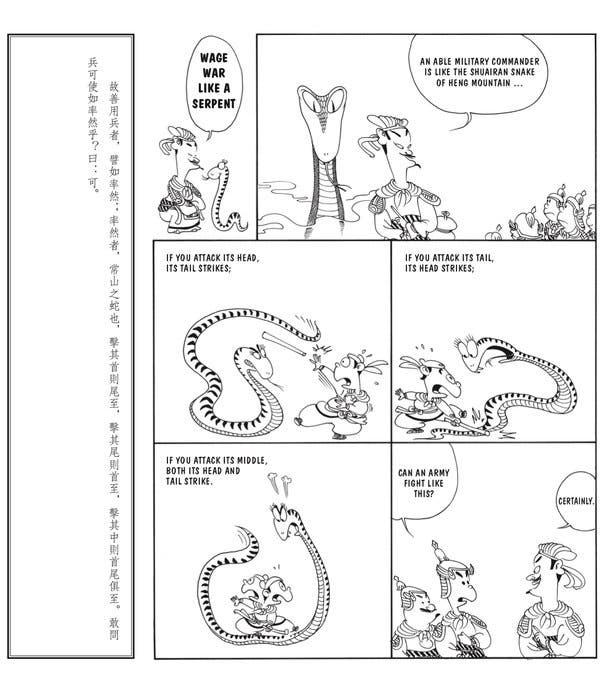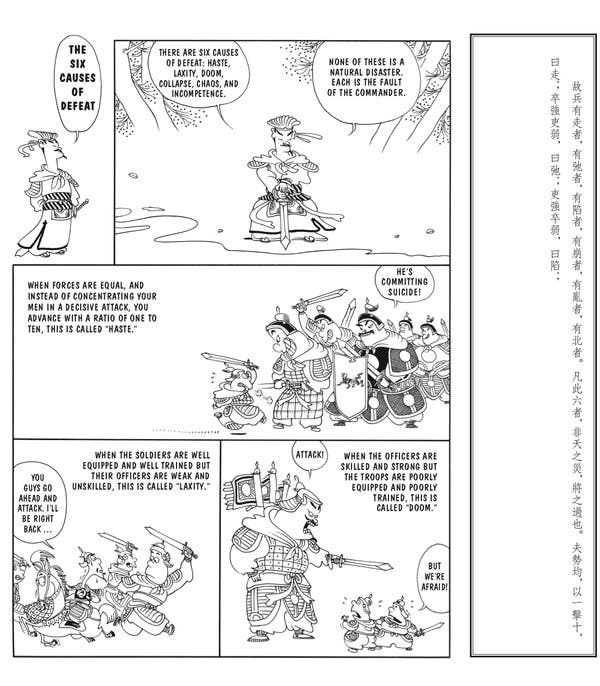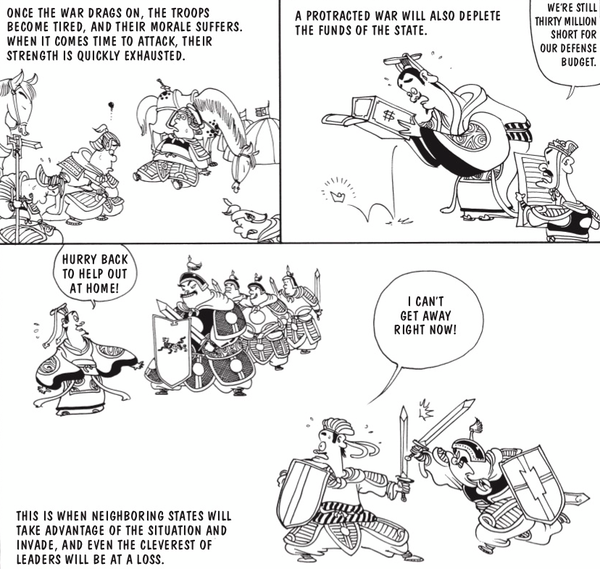C.C. Tsai is a Chinese artist and illustrator of Sunzi’s classic “The Art of War”. K.S. Tsai decided to adapt Sunzi’s The Art of War in a more modern format over 30 years ago. His goal was to breathe new life into a text that is 2,500 years old.
After reviewing several editions of the text and secondary sources about it, he saw an opportunity to rethink The Art of War. This book remains to this day one of the most important writings on war and strategy. The artist of war turned it into an illustrated narrative.
In 1990, Tsai created a comic book version for a Chinese audience. And in 1994, an English-language edition appeared. Since then, Tsai’s expanded series of illustrated classics about ancient art of war has sold millions of copies and been translated into more than 20 languages.

Tsai’s adaptation of The Art of War brought a thousand-year-old treatise to life. The artist removed repetitive elements and condensed the narrative to the point that the ancient art of war did not disappear from the pages.
Illustrations are the defining element of Tsai’s work. His Disney-inspired style brings humor and spontaneity to the lyrics. Sunzi appears in history of ancient art of war as a wise and fearless commander with blank eyes, child-like soldiers, and a treacherous enemy who tries to cross him.
Princeton University Press has released a new edition of Tsai’s adaptation with a foreword by Lawrence Friedman, longtime professor of military studies at King’s College London.
The artist if war uses humor and stories to get the ideas across, to get the reader to relax and to be able to accept these ideas in a straightforward and simple format. The artist’s style in The Art of War is somewhat whimsical, but more serious than in the Taoist books, which are even more whimsical and humorous. Theartist used very simple lines, and if something didn’t need to be drawn, it was left out.

“The Art of War” is not a really long text, but it is longer than other Chinese classics, like the “Dao De Jing.” So, the artist didn’t draw every word from it. But he has drawn all the ideas in it.

























